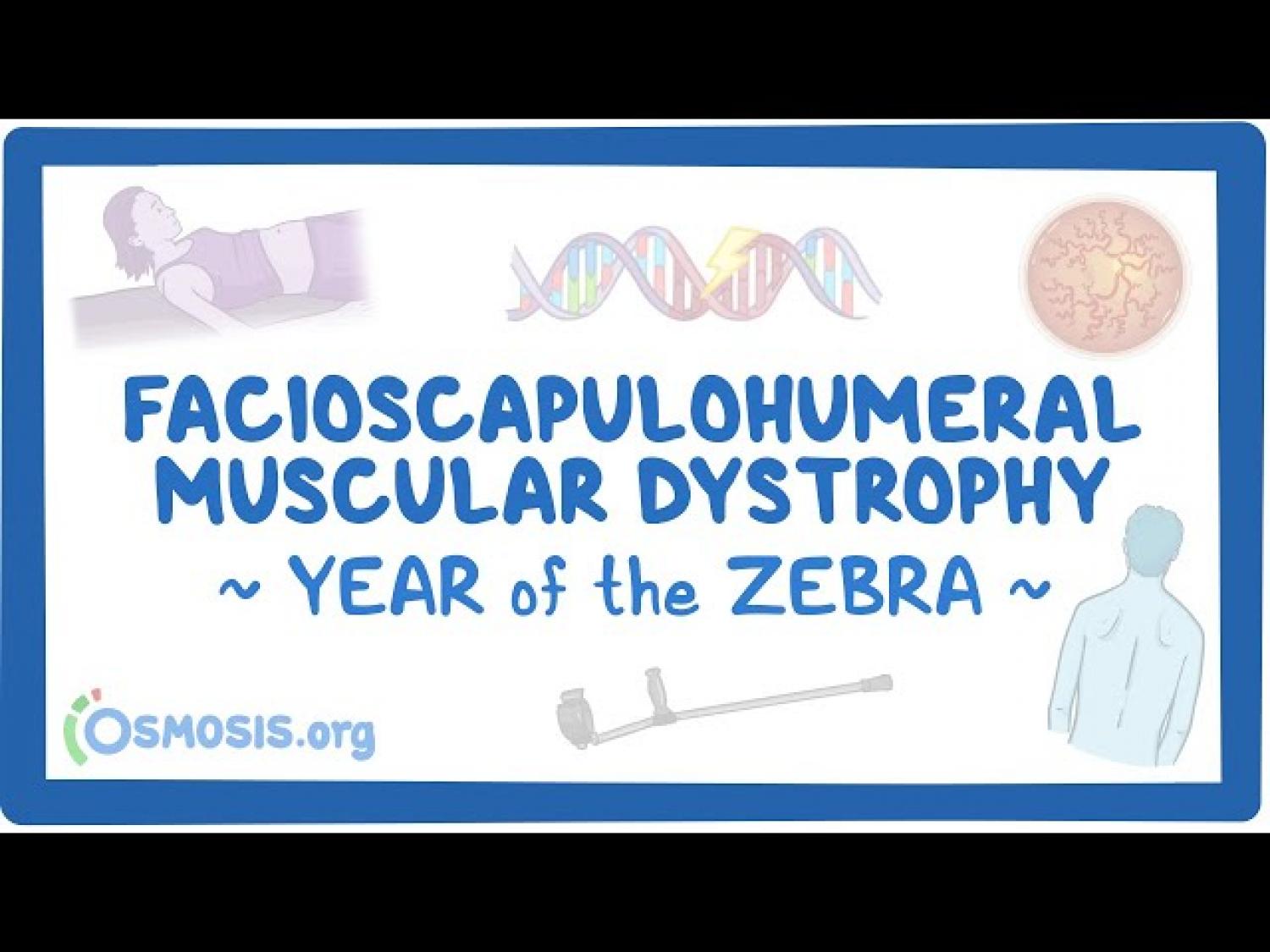
Rare Disease Education: Facioscapulohumeral Muscular Dystrophy
Editor: Kelsey LaFayette, DNP, RN, FNP-C
"When you hear hoofbeats, think of horses, not zebras,” is a common saying in medical education that means you should think of common conditions first, instead of rare ones, in making a diagnosis. “Rare” is a relative term though and about 7,000 rare, or "zebra," conditions affect more than 350 million individuals worldwide. Although these conditions collectively affect an enormous number of people, each of these conditions individually is rare enough that it can be difficult to secure the resources to study them and to develop treatments and cures. Likewise, awareness of rare conditions may be low and health care professionals may not be familiar with their signs and symptoms making it more difficult to reach a correct diagnosis and provide effective treatments.
To increase knowledge about rare conditions, Osmosis and the National Organization for Rare Diseases (NORD) have collaborated on an initiative to bring education and awareness to the public. We are excited to be a part of this initiative because we believe everyone deserves quality health care, no matter how rare their condition.
Zebra of the Week: Facioscapulohumeral Muscular Dystrophy
Consider the experiences you've had: playing a sport, dancing at a party, or perhaps just getting up from a chair. However simple, each of these actions requires a symphony of muscle movements that we don't even think twice about. For people living with Facioscapulohumeral Muscular Dystrophy, the symphony slowly starts falling out of tune. Eventually simple tasks like lifting the arms, smiling, or maintaining balance become increasingly difficult.
Facioscapulohumeral Muscular Dystrophy is one of the most common forms of muscular dystrophy, a group of diseases characterized by progressive weakness and loss of muscle. In this week’s Zebra, the muscles of the face (facio), shoulders (scapulo), and upper arms (humeral) are typically affected, hence its name. It is caused in most cases by the abnormal expression of a gene on chromosome 4 called DUX4. Unfortunately, this muscular dystrophy is autosomal dominant, meaning only one affected gene is enough to have the disease, giving transmission from parent to offspring a 50% chance. Symptoms usually appear in the teen years.
Meet Lexi, filmmaker
Lexi Pappas found out she had Facioscapulohumeral Muscular Dystrophy in high school when she couldn’t continue doing the sports that were such a big part of her life. In the span of just a few years, she went from an athletic young woman to struggling to walk. However, Lexi did not let any of this deter her from her dream of becoming a filmmaker.
Watch her inspiring story as she creatively overcomes numerous challenges, some as small as holding a camera steady, to fulfill her potential.
Organization Taking Strides
The Facioscapulohumeral Muscular Dystrophy Society, commonly known as the FSHD Society, was established in 1991 by two patients, Daniel Perez and Steve Jacobsen, sitting around a kitchen table. They were driven by the need for advocacy, education, and research for this under-recognized muscular dystrophy. The mission of the FSHD Society is to accelerate the development of research directed towards treatments and an ultimate cure for FSHD, while empowering individuals affected by this condition through knowledge, connection, and support.
Over the decades, the Facioscapulohumeral Muscular Dystrophy Society has grown into a leader in the field, playing a critical role in advancing research by providing over 3 million dollars in funding and participating in international research congresses. They also provide support to affected individuals and families through gatherings, podcasts, webinars, and events. Through their relentless work, they bring us closer to understanding this complex condition and finding ways to conquer it.
More Information on Facioscapulohumeral Muscular Dystrophy:
